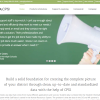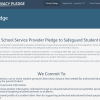Data – we have it, now what do we do with it?

I was recently talking to a teacher about data and never expected the response I received from her. She described, quite forcefully, the quality of the the data reports she receives weekly about her students. She told me that she is regularly “assaulted” by data that is irrelevant or confusing. She is provided a lot data, but never given any suggestions for interventions she can use to make a difference. And she continued on about how data needs to be actionable, and not just tell her what she already knows. She vented for about 20 minutes, and I emerged from the conversation with a fresh perspective on what types of data we need provide to teachers, and how we can make that data more useful for them. There were four overriding elements that kept surfacing in our conversation.
First, the data needs to relevant. Second, the data needs to be delivered in a timely fashion. Third, the data needs to be accurate. Fourth and most important, the data needs to be actionable. But what exactly does this all mean? What is relevant data and how timely should it be? What is accuracy and how does data become actionable?
Let’s first discuss accurate data and what that means. A teacher needs to be able to see every student in front of her reflected in her daily roster. She needs to have correct names, correct addresses, and correct contact information for a parent or guardian. She needs a correct age for the student. She needs to know that the data in front of her is as accurate as possible, and be able to trust the data. Does that happen now in most cases? I don’t think so. I hear a lot about rostering data and about how difficult it is to keep up with it. The rosters can change in the middle of the day or at the beginning of a day. It is important that these changes are reflected in the roster as soon as they happen, or teachers have no idea who is sitting in front of them. It is a genuine problem that can be resolved with more real-time data integration at school districts. Even then, it is not enough to have the correct roster data, although that is a huge help. If the data says the student is 5 years old, but you teach 10th grade, there is a problem. Validation on real-time data needs to be done as well. Accuracy entails a lot of different actions from the IT department, but it can be done.
Timely Data
Once again, it goes back to the teacher and what they need to see. If the data they see in front of them is 3 months old, it might not correctly reflect the status of the child at all. Did the child get a new guardian in the last 2 weeks? Did the child move? Are grades slipping? When trying to help children, the more up-to-date the data is, the easier it is to make decisions on interventions and assistance.
Relevant Data
Relevant data is simply the data the teacher needs to see during the day. She doesn’t need all data for the child every day, but she does need some data for the child every day. She needs to know enough about the child to help them throughout the day, and maybe that data should be able to be configurable by the teacher. Some teachers may need to see more data than others. Or maybe the data should be placed on separate pages of an application so that the teacher can choose what data she wants to look at. If a teacher only saw the relevant data, and if it was more accurate and timely, she would not think that the data was such an “assault”. There is so much data collected at a school, and much of that data is irrelevant to the daily teacher of a student. Let’s work with teachers to understand what is relevant to them.
Actionable Data
Data needs to be actionable, and that is the biggest problem with most data dashboards. A teacher looks at the data and says: “I can’t change the child’s socioeconomic status. It’s great to know they are Low SES, but I can’t do anything to change that.”. They need data they can act on. Essentially, if I know how a particular student learns, or what they require in order to learn, I can begin to help them. Once again, let’s stop talking to politicians or other policy makers and let’s start talking to teachers. They know what they need and what they want. They want to help the children in front of them. Let’s give them the tools to help them help their students.
How can we help? As vendors, we can listen to the various stakeholders and design technology for each group. A school principal needs something different than a teacher needs. A superintendent needs something different than a principal needs. A school board needs data too, but not the same data as the other groups. In business, we aim our message at the audience we serve. Let’s start, as education vendors, serving our various audiences the same way. As Margaret Searle (2013) so elegantly put it – problems can not be solved with a “one size fits all approach”.
To learn more about our products, check out our web site http://www.cpsiltd.com or email us at [email protected].




